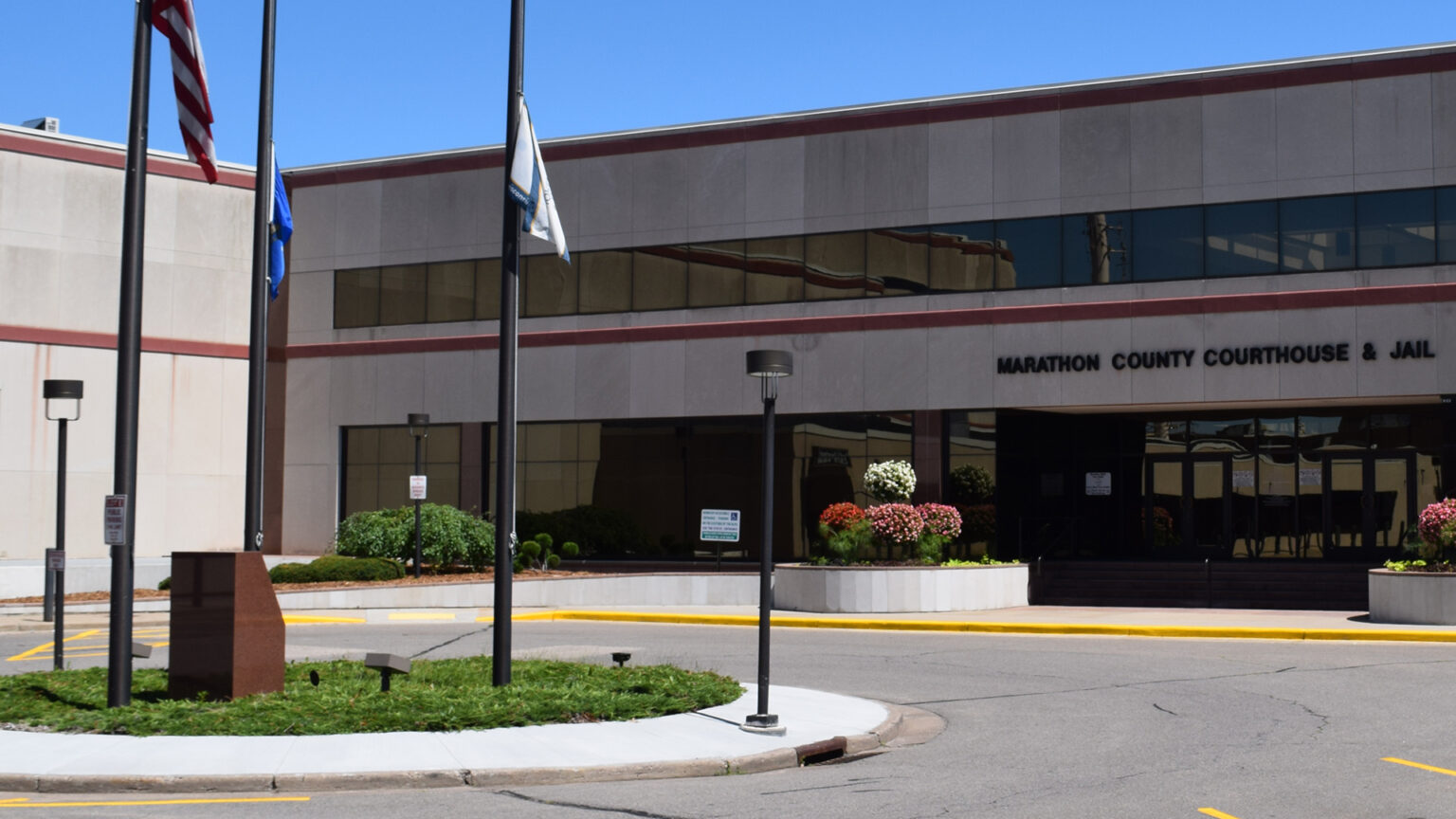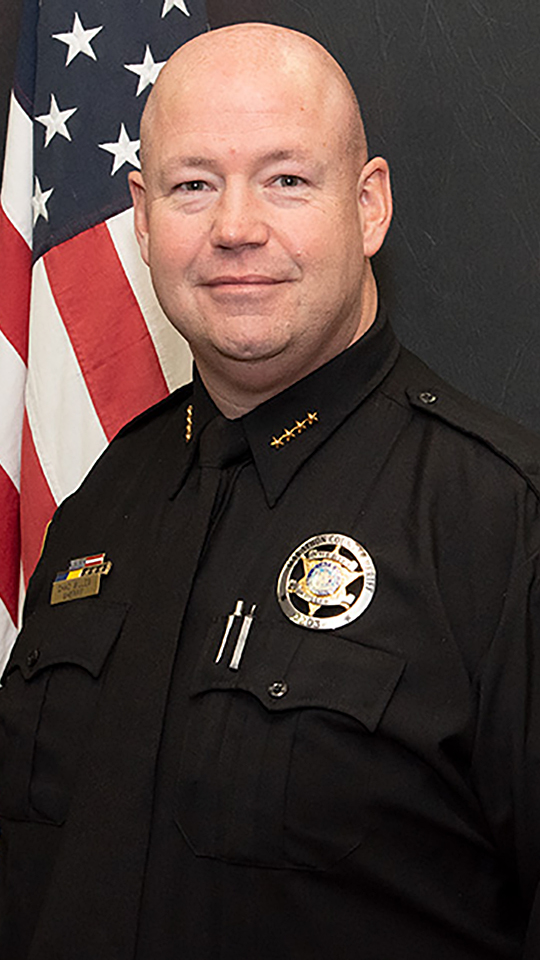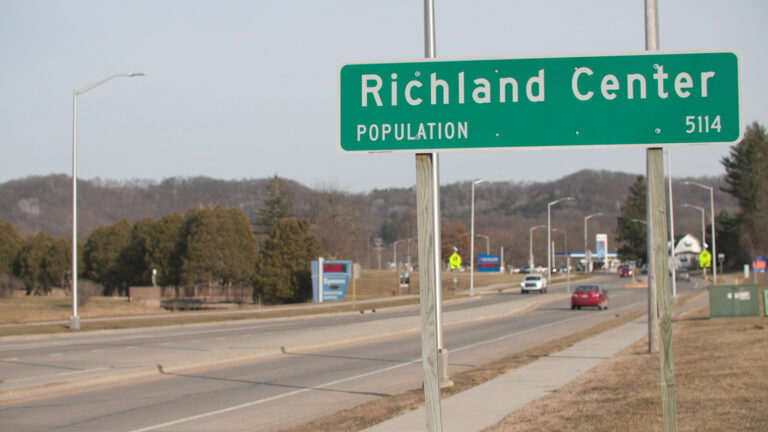County jail officer staffing in Wisconsin has fallen to a 'crisis level'
The number of county jail officers in Wisconsin is at its lowest point since the state Department of Justice started keeping track in 2008, leaving counties to pay more to transport and house inmates elsewhere.
The Badger Project
August 2, 2023

Marathon County in north-central Wisconsin has more than one-quarter of its correctional officer positions open in the summer of 2023, leading the county to spend around $1 million during the year to transport and house jail inmates at other locations. (Credit: TheCatalyst31 / Wikimedia Commons)

The Marathon County Jail can hold up to 279 inmates. But the county is so short on correctional officers that it is paying other jails to house some of its prisoners. On July 25, the county had 131 inmates in its facility, and 117 elsewhere.
“We don’t have enough staff to watch them,” said Marathon County Sheriff Chad Billeb, who oversees the jail. “In a nutshell, there is a major issue. And it’s not just Marathon County. It’s jails across the state.”
“It’s become almost a crisis level,” he added.
The number of county jail officers in the state has fallen to its lowest point — 3,471 at the end of June — since the state Department of Justice started keeping track in 2008. The total peaked in 2009 at 4,493, and has dropped steadily since, according to state DOJ statistics.
Brown County in northeast Wisconsin has two jails and is about 25 jail officers short of a budgeted staff of 148, Sheriff Todd Delain said. In response, Delain has shuttered its smaller, courthouse-adjacent jail in downtown Green Bay. On July 24, Delain said 36 of his county’s inmates had to be housed at other counties’ jails, each at a cost of $45 per day. The sheriff estimates the county will spend $350,000 this year to house inmates elsewhere.
In north-central Wisconsin, Marathon County is enduring a shortage of more than 25% below its budgeted staff of 46 correctional officers. The county will spend about $1 million in 2023 to transport and house inmates elsewhere, Billeb said.
“It’s incredibly expensive when you have the resource here already,” he said. “In essence, you’re double paying. If we were adequately staffed, we could bring all those inmates back to Marathon County.”
Tough job in a tight labor market
Counties are recruiting jail officers hard. But current conditions make finding them — and keeping them — difficult.
Interest in a law enforcement career has been waning for years, chiefs and sheriffs around the state lament. Younger people seem less interested in working jobs that often require night and weekend shifts, and in more recent years, increased scrutiny, law enforcement officials say.
In addition, correctional officer jobs are often the entry point to a law enforcement career, placing them among the lowest compensated positions in the field.
Those conditions are playing out against an already tight job market.
Like many states, Wisconsin’s unemployment rate has bottomed out, hitting an all-time low of 2.4% in May, according to the state Department of Workforce Development. Wages everywhere have risen, creating greater competition for employees.

Marathon County Sheriff Chad Billeb points to the costs of housing inmates elsewhere. “In essence, you’re double paying,” he says. “If we were adequately staffed, we could bring all those inmates back to Marathon County.” (Credit: Marathon County Sheriff’s Office)
County jails also compete for workers with the state prison system, which is having its own shortage — a Wisconsin Department of Corrections online dashboard says state correctional officer positions have a vacancy rate of 34%.
And most counties do not designate their jail officers as a “protected occupation,” which includes police and firefighters. Protected occupation positions receive a higher retirement contribution from the state and require fewer years of work to reach retirement.
Avoiding ‘zombies’
While lower pay and benefits may hurt recruiting and retention efforts for correctional officers, the situation also could lead desperate sheriffs to lower hiring standards.
More than 30 county jail officers currently employed in the state were fired or forced out from previous law enforcement jobs, according to a list of flagged officers The Badger Project obtained from the state DOJ.
For those who stay on the job, sheriff’s departments run the risk of burning out their overworked and understaffed workforces with overtime shifts and call-ins on days off, Dunn County Jail Captain Douglas Ormson said.
And working in a jail can be dangerous for guards and inmates. Officers need to be fresh and vigilant.
“You don’t want zombies walking around,” he said.
The quality of correctional officer performance may have an indirect, but important, impact on the public. Most county jail inhabitants will be released back into society eventually. The quality of the supervision they receive on the inside is directly proportional to how well-adjusted they are on the outside, Ormson said.
Another shortage is squirting lighter fluid on the flames. A statewide dearth of public defenders and prosecutors means the accused have to stay in jail longer waiting for their cases to move through the system, Billeb noted. The 2023-25 state budget aims to improve this issue with big pay raises for those positions.
Higher wages, still behind
To counter the shortage of jail officers, many county boards have used the same tactic, boosting wages.
Brown County raised the starting hourly rate for new jail officers to $25 from about $22 in the most recent budget.
Along with the Fortune 500 paper companies in the area, which can raise wages faster than a municipality, the county competes for workers with the state prison in Green Bay. The state budget the governor signed in July raises the hourly wage of state correctional officers to $33 from $20, potentially solving one problem while exacerbating another.
And Delain noted that he saw a sign for a starting wage of $31 at the nearby Procter & Gamble facility.

Brown County Sheriff Todd Delain estimates the county will spend $350,000 in 2023 to house its jail inmates elsewhere. (Credit: Brown County Sheriff’s Office)
The Dane County Sheriff’s Office takes the unique approach of requiring most new deputies to work first as jail officers before moving to other fields like patrol. Hourly wage for the position starts at nearly $33. Still, the office is short about 14% of its 180 deputies assigned to the jail, Jail Captain Jan Tetzlaff said. That has forced the county to move some inmates to other jails, racking up a bill of more than $500,000 in the first half of 2023, Tetzlaff said. The county hopes construction of a new jail building, scheduled to start before the end of the year, will alleviate at least some of their staffing problems.
Marathon County has raised its starting hourly wage to $23 from about $19. But the salary increase hasn’t really worked.
“We’re still seeing the same number of candidates (applying),” Billeb said. “That’s why we’re a little gun shy about doing that again.”
The Marathon County Sheriff’s Department has increased its recruiting efforts for jail officers, and touts the job as an honorable, important career, one that’s essential to the safety of the community.
“We are looking for people who are committed to serving their community that want to work with this inmate population,” Billeb said. “In many regards, you have the opportunity to be a role model, a resource to help them out.”
The Badger Project is a nonpartisan, citizen-supported journalism nonprofit in Wisconsin.
 Passport
Passport











Follow Us